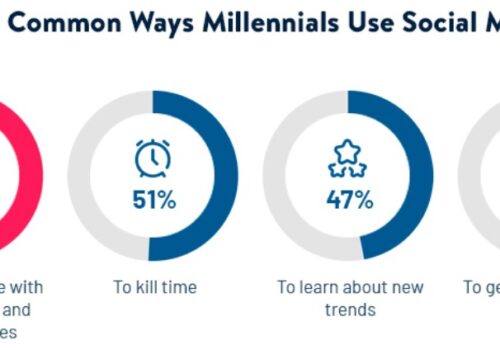Data breaches have become a critical concern in our digital age. These breaches involve the unauthorized access, exposure, or theft of sensitive information, often with far-reaching consequences.
Understanding the frequency and scale of data breaches is essential in safeguarding personal and organizational data.
A successful data breach can hurt an organization in more ways than one. Not only can it expose sensitive information, but it can also lead to ransomware and other damaging cyberattacks.
Let’s uncover the scale of this cybersecurity challenge and learn how it affects individuals and businesses alike.
How Many Data Breaches 2025?
| Statistic | Value in [2024] |
|---|---|
| Average Total Cost of a Ransomware Breach | $5.13 million |
| Average Cost of a Data Breach | $4.45 million |
| Per-Record Cost | $165 |
| Healthcare Breach Costs | $10.93 million (53.3% increase) |
| Detection and Escalation Costs | $1.58 million |
| Cost of Breaches with a Lifecycle Over 200 Days | $4.95 million |
| First-Year Costs | 51% of costs incurred in the first year |
| Country-Specific Costs (Highest in the US) | $9.48 million |
| Cost of Mega-Breaches (50 to 60 million records) | $332 million (down from $401 million) |
| Average DDoS Attack Duration | 50 minutes (332% increase) |
When we talk about “how many data breaches” happen, it feels like we’re hearing about new ones way too often. It’s a bit scary, isn’t it?
Every time you turn on the news or check the internet, there seems to be another company or website that’s been hit.
These breaches mean that personal info like names, email addresses, and sometimes even passwords can get stolen. I’ve started to pay more attention to this stuff, not just because it’s everywhere, but because it affects you and me directly.
It’s a reminder to be a bit more careful about where we share our info online. Plus, it shows why it’s smart to change our passwords regularly and keep an eye on our accounts.
General Data Breach Statistics 2025:
Source: Pexels
- Around 817 data breaches have been reported in the U.S. since H1 2022.
- 19% of data breaches occurred due to a compromise with a business partner.
- 73% of cyber insurance claims from 2013 to 2019 were due to data breaches, incident response, and crisis management.
- Inconsistent cloud security configurations have led to over 69% of companies facing data breaches.
- A zero-trust architecture was not employed by 79% of critical infrastructure organizations.
- Cloud-based data breaches made up 45% of all breaches.
- At least 42 million records were compromised between March 2021 and February 2022 due to data breaches.
- Hospitals make up 30% of all large data breaches.
- Data breaches impacted nearly 294 million people.
- 83% of data breaches in 2022 involved internal actors.
- 95% of data breaches are financially motivated, an increase of 24% since 2019.
- Ransomware accounts for nearly 24% of incidents where malware is used.
- 95% of breached records came from the government, retail, and technology sectors.
- More than 70% of breaches can be traced back to organized crime groups.
- 67% of companies agreed that they are susceptible to insider threats.
- For an email compromise attack, the average cost to a business is $130,000.
- 90% of cyber attacks entail social engineering tactics.
- Over the past year, 39% of companies have reported experiencing a malware attack.
- Between November 2021 and October 2022, Microsoft Office applications were the most commonly exploited applications worldwide, accounting for 70% of attacks.
- In 2022, online fraud caused Americans a total loss of $8.8 billion, with a median individual loss of $650.
- IT security spending worldwide reached $193 billion in 2022 and is projected to grow by 12.1% to $219 billion by the end of 2023.
- Between 2021 and 2025, it is forecasted that global spending on cybersecurity will exceed $1.75 trillion.
- After a significant increase in 2021, the number of ransomware attempts decreased to 494 million in 2022, which is still 60% higher than in 2020.
- Yahoo suffered a data breach that affected almost 1 billion people. The cause was an outsider who accessed the data through identity theft.
- There was a security breach in India’s Aadhar biometric database, which exposed the personal data of almost every citizen, nearly 1.1 billion people.
Data Breach Statistics by Industry:
- 90% of healthcare institutions have experienced at least one security data breach in the previous few years.
- 30% of most data breaches occur in large hospitals with a record of exposing patients’ private health information.
- Major reasons for insurance claims in the IT and Communications sector were malicious data breaches (24%) and accidental data breaches (18%).
Average Response Time and Lifecycle:
- It took an average of 204 days to identify a data breach globally.
- Organizations using threat intelligence identify threats 28 days faster on average.
- The average time to contain a breach was 73 days.
- Breaches that used stolen or compromised credentials took the longest to resolve, at 88 days.
Cost of Data Breaches
Source: Pexels
- Average Total Cost of a Ransomware Breach: $5.13 million, which is 13 percent higher than in 2022. This figure is notably higher than the average cost of a general data breach.
- Average Data Breach Cost: The average cost of a data breach is $4.45 million, as per the information provided.
- Per-Record Cost: The average per-record (per capita) cost of a data breach is $165, which is one dollar higher than in 2022.
- Healthcare Breach Costs: Since 2020, healthcare breach costs have increased by 53.3 percent to $10.93 million, making healthcare data breaches the most expensive for 13 years in a row.
- Detection and Escalation Costs: In 2023, detection and escalation represent the largest share of breach costs, at an average total cost of $1.58 million.
- Cost of Breaches with a Lifecycle Over 200 Days: The average cost of a breach with a lifecycle over 200 days is $4.95 million.
- First-Year Costs: 51 percent of costs are incurred in the first year following a data breach.
- Country-Specific Costs: In 2023, the United States has the highest average total cost of a data breach at $9.48 million, followed closely by the Middle East with $8.07 million.
- Cost of Mega-Breaches: The average cost of a mega-breach (50 to 60 million records) in 2023 is $332 million, down from $401 million in 2021.
Breach Projections
- Cybercrime Costs: By 2025, cybercrime is estimated to cost $10.5 trillion globally, increasing by 15 percent year over year.
- Climate Change and Phishing Scams: Natural disasters caused by climate change will drive more donations, resulting in an increase in phishing scams.
- Online Gambling Targets: Phishing scammers will also target online gamblers as more states legalize online sports betting.
- Exploitation of Remote Work: Cybercriminals will seek to exploit individuals who work, learn, and play games remotely.
- Cryptocurrency and NFT Vulnerabilities: As attackers learn of the vulnerabilities of cryptocurrency and NFTs, these digital assets will be targeted as a means of identity theft.
- Infrastructure Targets: Cyberattackers will start to target physical infrastructure like electrical grids, dams, and transportation networks.
- Security AI and Automation: Security AI and automation will become a vital part of businesses protecting themselves from cyber-attacks and detecting issues.
FAQs
🔒 What is a data breach?
A data breach occurs when confidential, protected, or sensitive information is accessed, disclosed, or taken without authorization. This can include personal information like names, social security numbers, or credit card details.
🤔 How do data breaches happen?
Data breaches can happen through various means such as hacking, malware attacks, insider threats, or due to human error like misconfigured databases or lost devices containing sensitive information.
🛡️ How can I protect myself from a data breach?
To protect yourself, use strong, unique passwords for different accounts, enable two-factor authentication where possible, be cautious of phishing scams, regularly update your software, and monitor your accounts for any unusual activity.
💡 Why are data breaches so common?
Data breaches are common due to the vast amounts of digital data stored online, the increasing sophistication of cyber attackers, and sometimes, the inadequate cybersecurity measures in place by organizations.
📈 What are the consequences of a data breach?
Consequences can include financial loss, identity theft, damage to a company's reputation, legal repercussions, and long-term harm to individuals whose data was compromised.
🌍 Are data breaches a global issue?
Yes, data breaches are a global issue affecting millions of people and organizations worldwide. They transcend borders, impacting anyone connected to the digital world.
Quick Links:
- Ecommerce Statistics
- Logo Statistics
- Nonprofit Statistics
- Social Media Statistics
- Top OTT Statistics
- Pinterest Statistics
- Video SEO Statistics
Conclusion: How Many Data Breaches 2025?
Data breaches pose a significant threat to personal privacy and organizational security. With the increasing reliance on digital technologies, the frequency and impact of data breaches continue to rise.
These breaches result in the unauthorized access or disclosure of sensitive information, leading to financial loss, reputational damage, and legal repercussions.
Despite efforts to enhance cybersecurity measures, data breaches remain a persistent challenge in today’s interconnected world.
It is imperative for individuals and organizations to prioritize cybersecurity practices and remain vigilant in safeguarding sensitive data from potential breaches.







